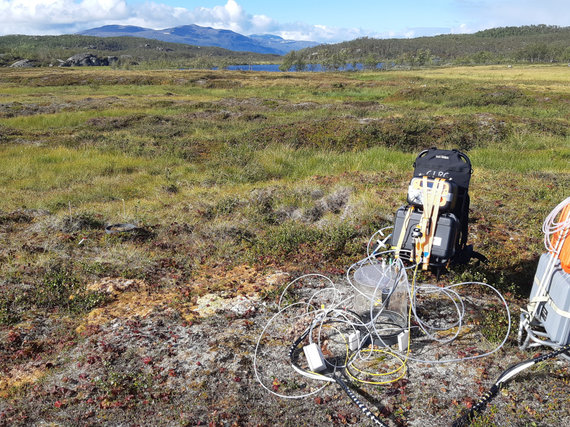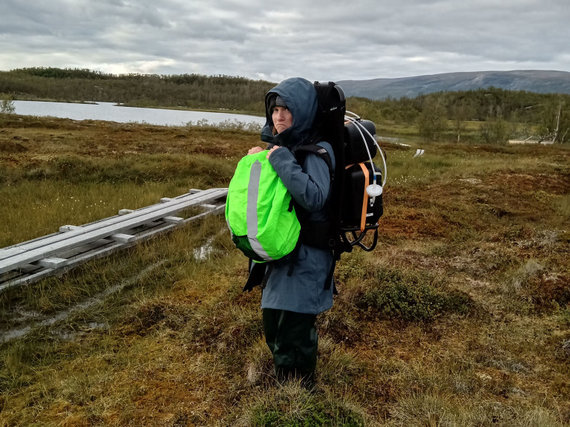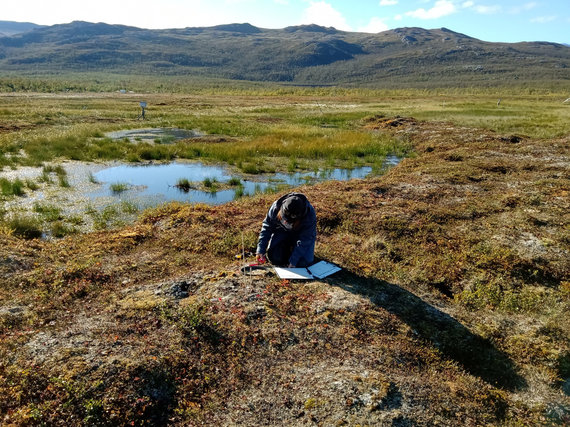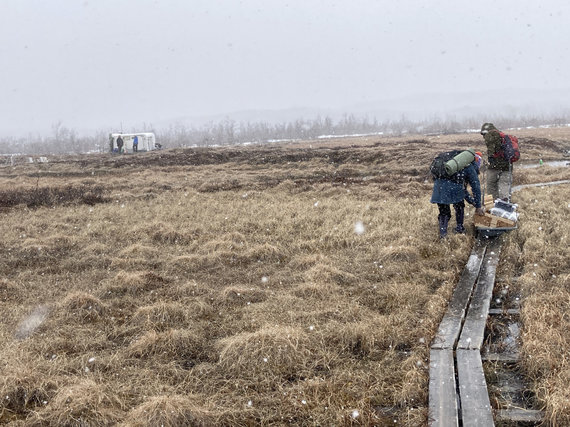Impact of micro habitat properties and seasonal weather conditions on N2O fluxes in the Arctic
Lead: Nathalie Ylenia Triches
Impact of micro habitat properties and seasonal weather conditions on N2O fluxes in the Arctic
In the (sub)- Arctic regions, the carbon (C) cycle and emissions from greenhouse gases such as carbon dioxide (CO2) and methane (CH4) have been documented for many years, but only recent studies suggest that also substantial amounts of nitrous oxide (N2O) may be emitted from permafrost soils (1,2). Nitrogen (N) is released from soils in different forms, including N2O, and this is likely to affect the local biogeochemistry and global climate change. Up to date, only very few datasets are available that investigate how much N2O is coming out of or taken up by (permafrost) soils, and how these fluxes (emissions and uptake) are influenced across different micro habitats, and in different seasons in (sub)- Arctic regions. Because of that, the spatial and temporal heterogeneity of N2O fluxes and interactions between C and N cycles in cold regions are not well understood to date.
During my PhD, I will investigate the controls of N2O fluxes in the Arctic, with the overarching aim of quantifying interactions between C and N cycles ecosystems in the Northern high latitudes. In May, July, and September 2024, I explored the sub-Arctic Stordalen palsa mire in Sweden, together with students from several international universities. We measured N2O, CH4, and CO2 fluxes on a palsa-bog-fen thawing gradient (dry to wet habitats) using dark and transparent chambers with portable greenhouse gas analysers (see photos). In 2024, we will go back to northern Sweden in between June and August to collect more data.
With dark measurements, we will measure soil respiration (soil efflux), whereas the transparent chambers allow us to measure photosynthesis of ground vegetation, or, in case of N2O, the impact of sunlight (PAR) and vegetation on N2O fluxes.
At Stordalen, I closely collaborate with scientists from Finland and the US. Within the automated chamber (AC) system from the long-term project “EMergent Ecosystem Responses to ChanGE” EMERGE of the University of New Hampshire (PI: Ruth Varner), the University of Eastern Finland (UEF) installed a Picarro N2O analyser in May 2022 to continuously measure N2O and CH4 fluxes on a thawing gradient.
This AC data is analysed within the Nitrogen-Permafrost project N-PERM at UEF (PI: Christina Biasi, Jenie Gil Lugo, and Maija Marushchak). Various scientists from UEF are also planning to have a close look at the micro organisms living in the soil to explain what drives the N2O and CH4 fluxes we measure in the field (e.g., with incubation experiments). Last but not least, scientists from the University of Helsinki (PI: Ivan Mammarella) installed an Aerodyne N2O laser at the ICOS eddy covariance flux tower at Stordalen in August 2022. All our measurements will provide the first extensive database of N2O flux measurements in the (sub-) Arctic.
In 2024, I plan comparative field measurements along a disturbance gradient in Kilpisjärvi in a sub-Arctic location of Northern Finland. Based on the data gathered in Abisko and Kilpisjärvi, we can analyse the effect of micro habitat properties (e.g., soil moisture, soil temperature, soil C and N content, vegetation composition) and environmental variables (e.g., PAR, air temperature) on N2O, but also CH4 and CO2 fluxes. Our analyses will differentiate between various habitats at very small scales, with a focus on differences in fluxes between spring, summer, and autumn. With this, we aim to contribute understanding the potential role of N2O fluxes for present and future Arctic greenhouse gas budgets.
References
1. Gil, Jenie A., Maija E. Marushchak, Tobias Rütting, Elizabeth M. Baggs, Tibisay Pérez, Alexander Novakovskiy, Tatiana Trubnikova, Dmitry Kaverin, Pertti J. Martikainen, and Christina Biasi. 2021. ‘Sources of Nitrous Oxide and Fate of Mineral Nitrogen in Sub-Arctic Permafrost Peat Soils’. Biogeosciences Discussions 1–25. doi: 10.5194/bg-2021-228.
2. Marushchak, M. E., J. Kerttula, K. Diáková, A. Faguet, J. Gil, G. Grosse, C. Knoblauch, N. Lashchinskiy, P. J. Martikainen, A. Morgenstern, M. Nykamb, J. G. Ronkainen, H. M. P. Siljanen, L. van Delden, C. Voigt, N. Zimov, S. Zimov, and C. Biasi. 2021. ‘Thawing Yedoma Permafrost Is a Neglected Nitrous Oxide Source’. Nature Communications 12(1):7107. doi: 10.1038/s41467-021-27386-2.




